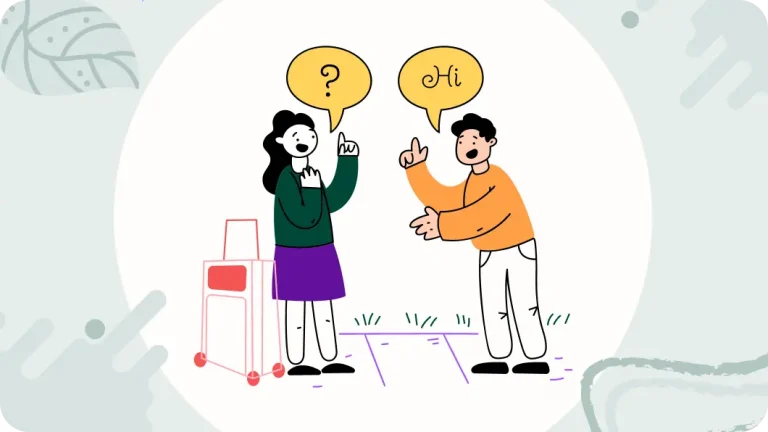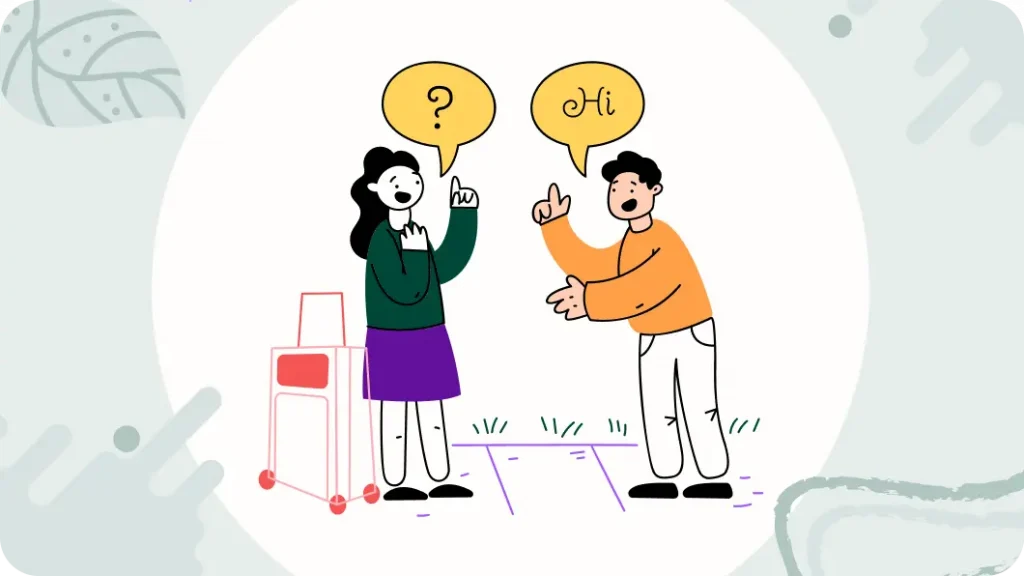How to Unstrange a Stranger
Within seconds of meeting a stranger our brain places them into one of two categories; either one of “US,” the in-group, or one of “THEM,” the out-group. Specialized brain functions facilitate this tribalistic survival strategy to enhance social cohesion with the in-group, while rapidly identifying threats and dangers from the out-group.
I call this rapid categorizing of people as US or THEM the “Hello Effect.” Understanding the subconscious neurophysiology of how the Hello Effect works, can help limit the social bias that we unknowingly create. To decode this we will look at three specialized brain functions, and three core questions they ask, and how they can help us unstrange a stranger.
Mirror Neurons
Imagine you are walking down the street alone at night and a stranger is approaching you. The first question your brain asks is, “are they a threat?” Before we even see their facial expressions, our brain is already attempting to mirror the movements of the body to see what type of physiological state they are in. Are they moving fast, or sluggish? Are they showing any signs of injury or aggression?
The ability to mirror an individual’s movements is attributed to mirror neurons (but you probably already guessed that). Mirror neurons were discovered in the 1990s by Italian neuroscientists Rizzolatti and Craighero. They were found in the premotor cortex, an area of the brain responsible for planning and coordinating body movements. When an individual performs a movement a specific set of neurons fire to represent the movement in the brain. What Rizzolatti and Craighero also discovered is that when we observe someone else performing a movement, similar neural patterns fire in our brain as we watch them move. This mirroring effect enhances the ability to engage in social learning and imitation. It also enables us to understand the internal state of others by rapidly simulating their actions, intentions, and emotions.
Through the mirror neurons we experience what others are experiencing and begin to get a sense of how that person is feeling, their mood, and the neurophysiological state they are in. We can then use that information to determine if the person is safe to engage with or if they are an immediate threat and should be avoided
Social Context
Let’s imagine your brain, using the mirror neurons, determines the stranger is not a threat. The next question the brain asks is, “does their physiological state match the current social context?” For example, imagine a person at a funeral is acting excited and happy, giving high-fives to everyone while wearing a t-shirt and shorts. Your brain might try to rationalize why they are acting out of context, but initially it will raise a red flag.
To understand the alignment of a person’s state and behavior within the social context, a unique set of neurons called spindle, or von Economo neurons (VENs), are activated. These specialized neurons were discovered by neuroanatomist Constantin von Economo in Vienna, Austria in the early 20th century. During detailed anatomy studies of the human brain, Constantin noticed long, spindle-shaped neurons that extended across several brain regions.
With modern brain imaging and histological analysis it was confirmed that these spindle neurons facilitate rapid communication between the more advanced cortex and the more primitive emotional centers of the brain. This intra-brain communication enhances both self-awareness and social awareness. Spindle neurons have become associated with gut-feelings, empathy and evaluating social cues.
When we meet strangers, these neurons help us understand the social context and the appropriate behavior within the context. Utilizing spindle neurons we can determine if a person shares a similar model of the world and appropriate social behavior. Further, research suggests that individuals with higher spindle neuron density may exhibit greater empathy and social competence, enabling them to navigate social interactions with ease.
If a stranger shows a similar understanding of context and behavior, determined by spindle nerve activation, it can inspire more trust and empathy with them. It is much more likely for the brain to categorize them as a member of the “US” group.
Moving Together
So let’s continue to imagine that the mirror neurons have determined the person is not a threat and the spindle neurons have confirmed the person’s state matches the social context. At this point the brain is starting to think that this person is not an immediate threat and may be safe to engage with. The last question that the brain asks in the first few seconds of meeting a stranger is, “can we move together?”
Ultimately the brain wants to find other brains and bodies that can move together to share the burden of survival. It wants to find team-mates to make the work lighter and the play more fun. For example, before a rugby game, the New Zealand team performs a haka, a traditional Maori ceremonial dance that displays unity, strength, and shared identity. During the haka, the synchronization of rhythmic movement and sound communicates to the brain that we are ready to collaborate and cooperate. It helps to anchor the feeling of being part of the “US” group.
These shared rhythmic patterns of neural activity and movement, often called group oscillation, help to create social coherence between ourselves and others. Vocal patterns, eye movements, body gestures and emotional information can become synchronized to increase the feeling of trust and connection.
Consequently, rhythmic movement and sound patterns can further induce brain-wave and heart-beat synchronization and may result in an increase in oxytocin release (the “bonding hormone”) and emotional contagion, where individuals experience shared emotional states.
In general, social coordination of movement and sound stimulates synchronized neural activity signaling to the brain that the stranger is not so strange.
Unstrange a Stranger
During the Hello Effect, within a matter of seconds our brain attempts to answer three questions to determine if the person is one of “US”, in-group, or one of “THEM”, the out-group:
- Is the stranger a threat? Using mirror neurons the brain simulates a person’s neurophysiological state to determine if they are a threat
- Does the stranger’s state match the context? Spinal neurons help to determine if the person’s neurophysiological state and behavior is coherent with the current social context
- Can we move together? Shared rhythmic neural patterns determine if we can coordinate movements with the stranger to enhance collaboration during work and play.
If you lived in a tribal society 300 years ago, or find yourself walking down a dark street at night, the Hello Effect is a valuable process and could save your life. However, we also need to understand that the Hello Effect is still subconsciously active in everyday encounters where it might not be needed. For example, when you meet a new person at work your brain goes through the Hello Effect process and you categorize the co-worker as one of “US”, or one of “THEM”, within a few seconds of meeting.
You might not recognize that you have put them in a category, because of course they are your co-worker and rationally they are in the “US” category. But subconsciously they may be in the “THEM” category. If they are one of “THEM”, they can be seen as a threat and you are more likely to disagree with their ideas. You might not be as eager to work with them on projects.
To unstrange the stranger we need to become conscious of the process we go through in creating the US/THEM dichotomy. We need to slow down our neurophysiological processing and become aware of what we are thinking and feeling as we engage with new people. We need to recognize that we are not part of a tribe, even though our brain might think we are.
One key indicator to determine if someone is in the “US” or “THEM” category is to make a list of things you like or do not like about them. If the brain determines that the person is part of the in-group, not only are they safe and can be trusted, but the brain tries to find more positive aspects of the person to reinforce the dichotomy. For example, you like the clothes they wear, the tonality of their voice, and you may find yourself liking similar things that they like.
On the other hand, we tend to reinforce the negative qualities of individuals in the out-group. We don’t like their clothes or voice tonality, and find ways to criticize what they enjoy. Our brain is designed to reinforce the subconscious US/THEM categories through conscious thoughts about the person.
Once you have made the list of things you like and do not like about a person, if you find that the dislike-list is much longer than the like-list, then that person is probably in the “THEM”, out-group, category. This means we need to find ways to move THEM closer to “US”.
How do you do that? First, mirror their actions to build empathy and connection. Take time to understand how their behaviors are aligned with the social context, even if you initially think they are not. Find ways to synchronize movement and sound together (dancing and singing are good for this).
If you make the conscious effort, you can start the process of bringing more people into the in-group. Your brain recognizes them as an “US” and you find ways to increase collaboration and cooperation to work and play together, which is one of the main goals of the human experience in the first place. By consciously understanding the Hello Effect, you now have some tools to unstrange the stranger.















